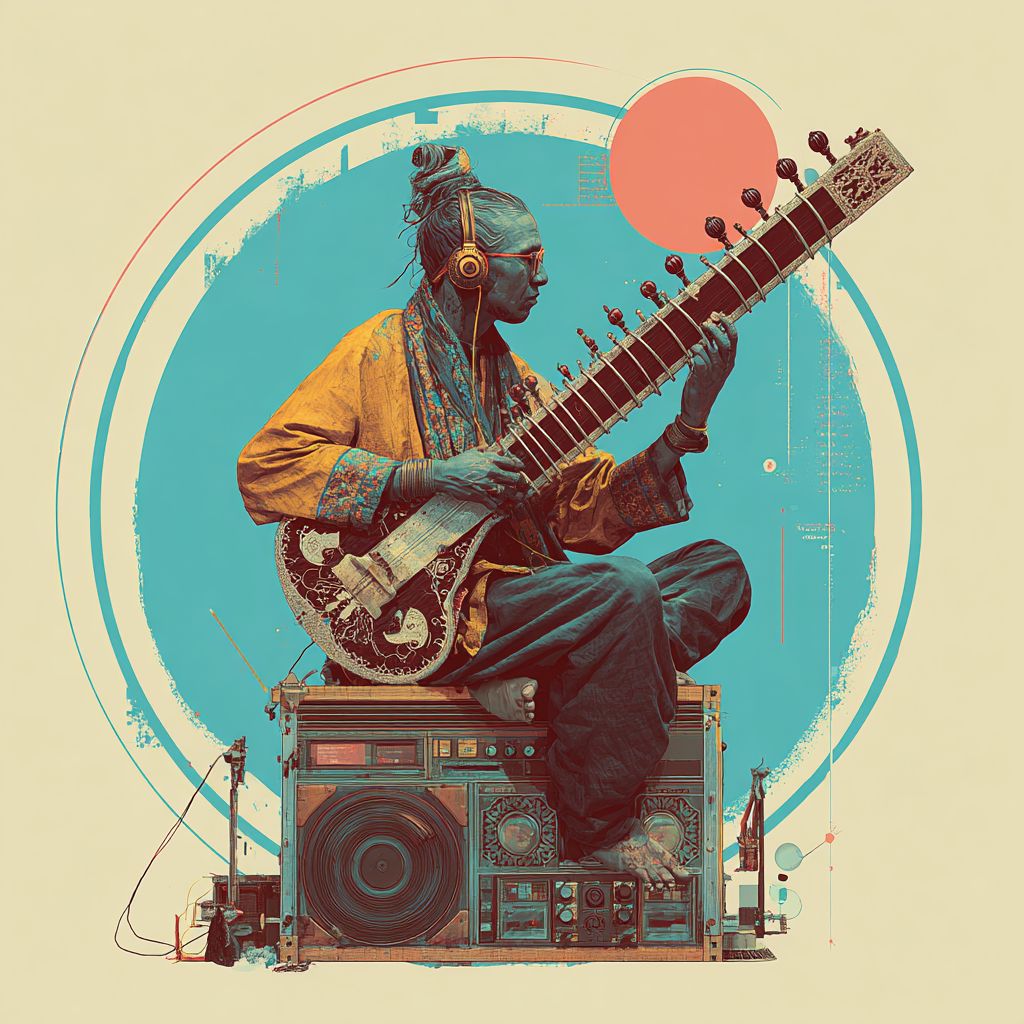Built in Temples. Remixed in Basements. Streaming Worldwide

It starts with a hum. A drone. Not quite a note, more like a frequency. And then a voice, taut, ancient, unapologetically sacred. It doesn't just sing, it casts.
Welcome to Carnatic music, one of the oldest living musical systems on Earth. It didn’t come to entertain. It came to remember. Let the raga rise. Let the chai flow.
Carnatic music wasn’t born in concert halls. It was born in the sanctum sanctorum (Hindu temple), whispered through oil-lit corridors, steeped in Thevarams, and stirred between turmeric-stained fingertips and steel tumblers of filter kaapi. Today, it’s on its second act, not just in Chennai sabhas, but on:
Spotify Discover
NPR’s Tiny Desk radar
Backbeats of diaspora kids remixing kritis with kick drums
"This isn't fusion," says L.A.-based composer Aditya Prakash. "This is reclamation."
The Raga is Ritual
Let’s break it down:
Raga: melodic DNA, designed to move emotion like a tide
Tala: rhythmic cycles so precise, they’d make Fibonacci nervous
Kriti: devotional poetry, looped into sacred architecture
Improvisation: not freestyle, but call and response with the cosmos
Each performance isn’t just a song.
It’s a ceremony. And if jazz is the music of the moment, Carnatic is the music of the eternal moment.

The Raga is Ritual
Carnatic Is Catching Fire: By the Numbers

When South Indian families moved to the U.S. in the 1970s,
They brought sound systems.
Vinyls of M.S. Subbulakshmi. Mandolins. Mridangams in carry-ons.
Ragas as lullabies.
Today, the next generation isn’t just preserving, they’re remixing. And scaling.
Here’s how Carnatic music is vibrating through the American soundscape.
National Footprint
Hundreds of Carnatic music schools across the U.S., from California to New Jersey
Cleveland Thyagaraja Aradhana: The largest Carnatic festival outside India, now in its 45th year
Carnatic Symphony USA: A youth orchestra in Chicago bringing classical South Indian compositions to the American stage
Navatman (NYC): Fusing live Carnatic vocals with Bharatanatyam, jazz, and community storytelling
Tamil Sangams, IIT alumni groups, and temples host kutcheris and Margazhi-style concerts in 30+ cities
Digital Growth
YouTube channels like IndianRaga and Cup O’ Carnatic now reach many million annual views, with 40% from North America
Spotify’s “Sound of Carnatic Vocal” now boasts hundreds of thousands+ global followers
→ U.S. hubs include San Jose, Edison, and DallasSid Sriram is redefining genre lines:
Millions of monthly Spotify listeners
Sold-out U.S. tours blending soul, R&B, and sacred ragas
Academic Recognition
In 2023 alone, 30+ U.S. universities and conservatories hosted workshops or residencies in Carnatic improvisation, including:
Berklee College of Music
UCLA Herb Alpert School of Music
New England Conservatory
Meet the New Wave:
Sid Sriram: Imagine if Sam Cooke sang Tyagaraja. That’s Sid. Raised in Fremont, trained in Carnatic, dipped in soul. His ballads break hearts in two languages and sometimes, two talas.
“Carnatic gave me control. Then I let it break.”
Start with: “Ennodu Nee Irundhaal” (but listen for the bhajan under the pop hook)Aditya Prakash Ensemble: Think Kamasi Washington meets Mylapore margazhi. Saxophone over tanpura. Jazz-funk raga explosions. Live sets that feel like temple raves.
Watch: “Drive East”
Roopa Mahadevan: NYC vocalist who swings from soul to sahitya. Part Broadway, part Bhairavi. She doesn't just sing ragas, she embodies them.
This Isn't a Revival. It's a Rebirth.

Carnatic music is no longer niche, it’s networked. From Edison to Oakland, veenas are plugged in.
Ragas are looping in Logic Pro.
And the diaspora isn’t just nostalgic, it’s prolific.
It’s not just being remembered. It’s being remixed. Rewritten. Reimagined.
Raga is not a relic. It’s a frequency. Tune in.
☕ A Note from The Weekly Chai
Every Friday, we serve up stories like this, where diaspora meets depth, and ritual meets remix. If it moved you, share it. If it stayed with you, subscribe.
Let the next note land in your inbox.
Disclaimer: This article is for cultural and educational purposes only. Interpretations of ragas may vary. Please consult trained experts for formal guidance. No endorsement is implied.
